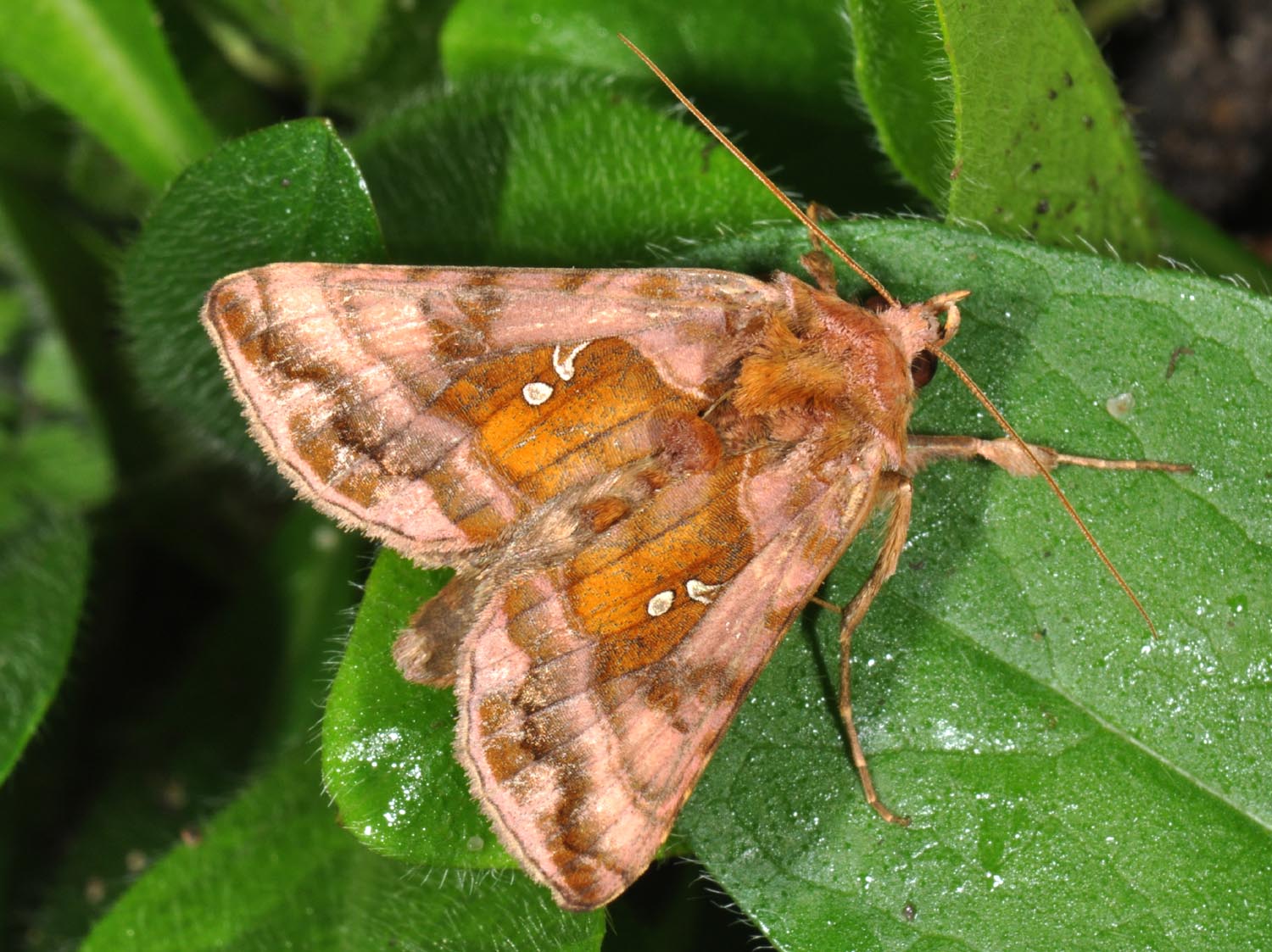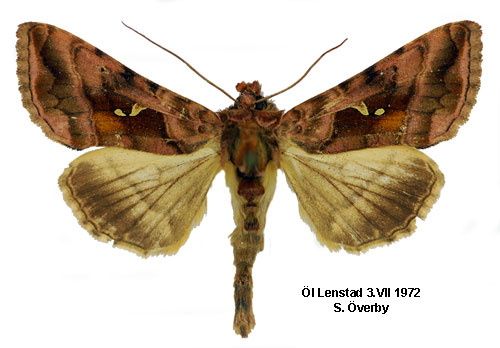Autographa jota
Iota - syllable Owl ( Autographa jota )
The iota - syllable Owl ( Autographa jota ), also known as Jota Gold Owl, is a butterfly (moth ) from the family of cutworms ( Noctuidae ).
Features
The iota - syllable Owl is a medium-sized butterfly with a wingspan from 36 to 44 millimeters from the subfamily of Gold Owl ( Plusiinae ). The moths have similar reddish-brown forewings with silver-colored characters in the form of a V with an adjacent point, which are often connected to each other and then the small Greek letter gamma. The Greek letter iota, as the name of the species can possibly suspect the drawing but almost never similar. The midfield is obscured. In contrast to the very similar and slightly smaller Ziest - syllable Owl ( Autographa pulchrina ) the drawing is less contrast, less colorful and usually somewhat brighter. The fringes on the bottom are monochrome. The hind wings are brownish-gray with a dark tie and dark means hem. The species vary greatly in color and pattern, and the following forms have been described:
- F percontationis Tr. , with coalesced metal sign
- F Inscripta Esp. , without metal sign
The caterpillars are light green and have a dark, white ring around the topline and slightly wavy, white back side lines and also white side stripes and dots warts. The spiracles are yellowish, the head green. The doll is black, yellowish at the bottom.
Similar Species
- Ziest - syllable Owl ( Autographa pulchrina )
Geographical distribution and habitat
The iota - syllable Owl is widespread in Europe and is also found in parts of the Middle East. In the Alps, you can still find them at altitudes of 1,900 meters. The occurrence comprises sunny slopes, moorland, forest edges, riparian areas, floodplains, valley meadows, gardens and parklands.
Way of life
The iota - syllable owl is nocturnal and also flies to artificial light sources. The females lay eggs on the food plant from, which hatch the caterpillars in the fall and then feed on the leaves of a variety of plants, such as:
- Nettle (Urtica )
- Dead nettle ( Laminum )
- Betony ( Stachys )
- Hemp-nettle ( Galeopsis )
- Agrimony ( Eupatorium CANNABINUM ')
- Bilberry (Vaccinium myrtillus)
- Sage ( Salvia )
- Ragwort ( Senecio )
They overwinter and pupate mainly in May of the following year in a thin, white web. The moths fly from June to August.
Endangering
The species occurs in Germany in very different frequency and is classified in some states in Category 1 ( threatened with extinction ).









